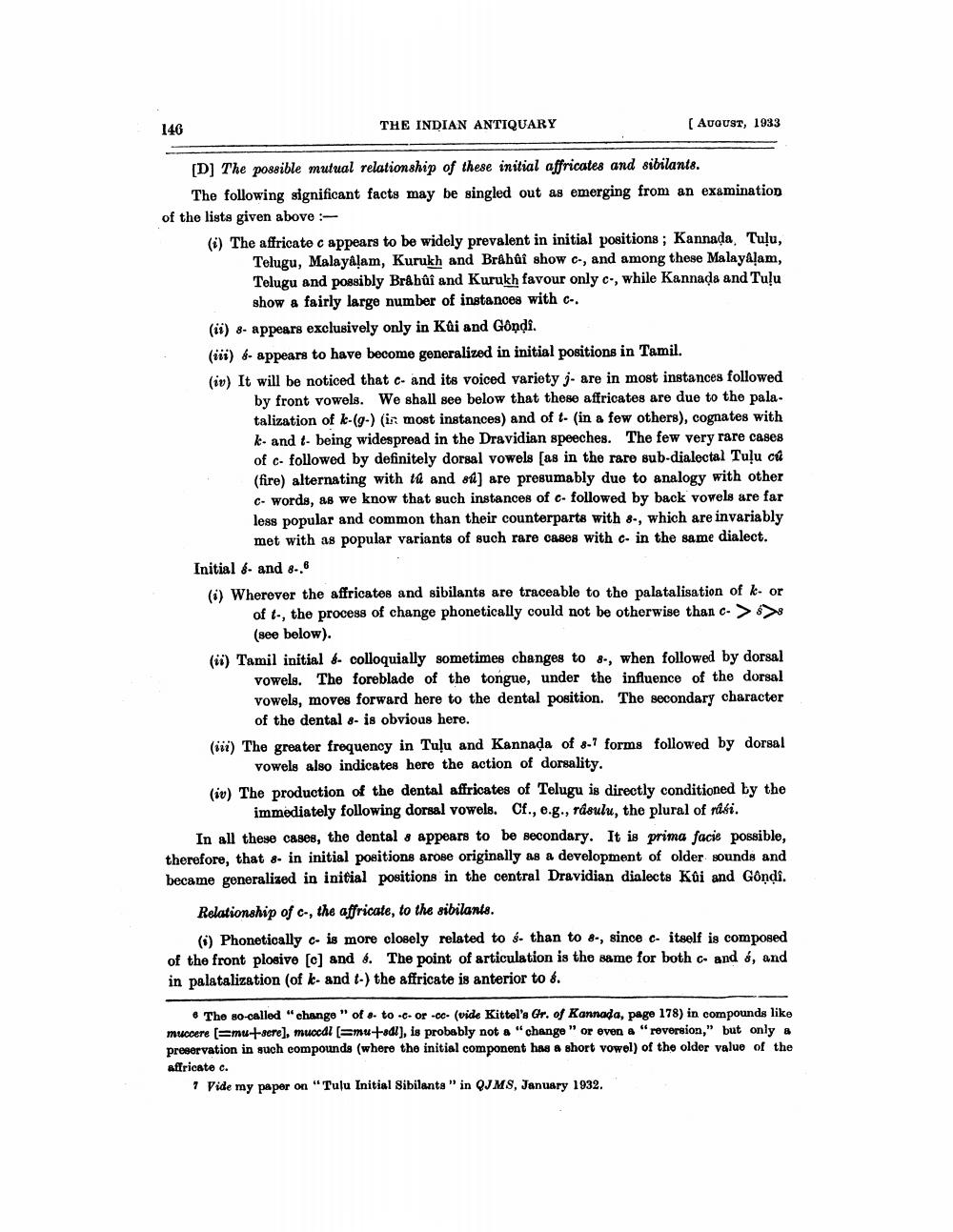________________
146
THE INDIAN ANTIQUARY
(AUGUST, 1933
[D] The possible mutual relationship of these initial affricates and sibilants.
The following significant facts may be singled out as emerging from an examination of the lists given above :6) The affricate c appears to be widely prevalent in initial positions ; Kannada Tuļu,
Telugu, Malayalam, Kurukh and Bråhûs show C-, and among these Malayalam, Telugu and possibly Brahûî and Kurukh favour only c., while Kannada and Tuļu
show a fairly large number of instances with c-. (ü) 8- appears exclusively only in Kai and Gôndi. (ii) 8- appears to have become generalized in initial positions in Tamil. (iv) It will be noticed that c. and its voiced variety - are in most instances followed
by front vowels. We shall see below that these affricates are due to the palatalization of k-(9-) (is most instances) and of t. (in a few others), cognates with ke- and t- being widespread in the Dravidian speeches. The few very rare cases of c- followed by definitely dorsal vowels (as in the rare sub-dialectal Tuļu cht (fire) alternating with td and st) are presumably due to analogy with other C- words, as we know that such instances of c- followed by back vowels are far less popular and common than their counterparts with s-, which are invariably
met with as popular variants of such rare cases with c- in the same dialect. Initial &- and 8..6 ) Wherever the affricates and sibilants are traceable to the palatalisation of k. or
of t., the process of change phonetically could not be otherwise than c>8>
(see below). (is) Tamil initial & colloquially sometimes changes to d., when followed by dorsal
vowels. The foreblade of the tongue, under the influence of the dorsal vowels, move forward here to the dental position. The secondary character
of the dental 8- is obvious here. (ii) The greater frequency in Tuļu and Kannada of 8.7 forms followed by dorsal
vowels also indicates here the action of dorsality. (iv) The production of the dental affricates of Telugu is directly conditioned by the
immediately following dorsal vowels. Cf., e.g., rasulu, the plural of rafi. In all these cases, the dental , appears to be secondary. It is prima facie possible, therefore, that 8. in initial positions arose originally as a development of older sounds and became generalized in initial positions in the central Dravidian dialects Küi and Gondi.
Relationship of c-, the affricate, to the sibilants.
(1) Phonetically c- is more closely related to s. than to 8-, since c- itself is composed of the front plosive (o) and &. The point of articulation is the same for both c. and y, and in palatalization (of k- and t-) the affricate is anterior to 8.
• The so-called "change" of sto .cor -cc-(vide Kittel's Gr. of Kannada, page 178) in compounds like muccere Emutsere), muocdl (Emu-tadt), is probably not a "change" or even a "reversion," but only a preservation in such compounds (where the initial component has a short vowel) of the older value of the affricate c.
7 Vide my paper on "Tulu Initial Sibilants" in QJM, January 1932.




